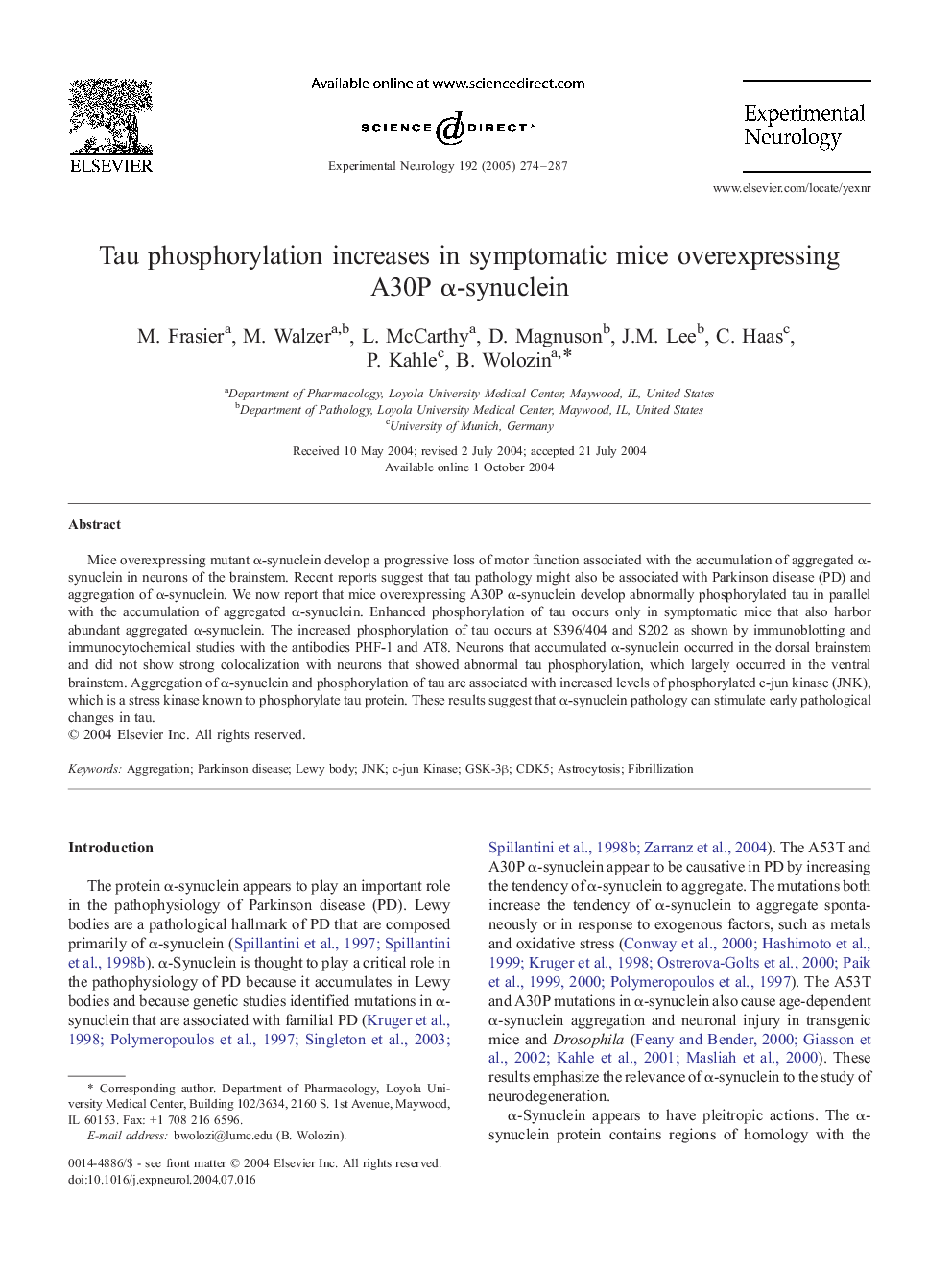| Article ID | Journal | Published Year | Pages | File Type |
|---|---|---|---|---|
| 9192011 | Experimental Neurology | 2005 | 14 Pages |
Abstract
Mice overexpressing mutant α-synuclein develop a progressive loss of motor function associated with the accumulation of aggregated α-synuclein in neurons of the brainstem. Recent reports suggest that tau pathology might also be associated with Parkinson disease (PD) and aggregation of α-synuclein. We now report that mice overexpressing A30P α-synuclein develop abnormally phosphorylated tau in parallel with the accumulation of aggregated α-synuclein. Enhanced phosphorylation of tau occurs only in symptomatic mice that also harbor abundant aggregated α-synuclein. The increased phosphorylation of tau occurs at S396/404 and S202 as shown by immunoblotting and immunocytochemical studies with the antibodies PHF-1 and AT8. Neurons that accumulated α-synuclein occurred in the dorsal brainstem and did not show strong colocalization with neurons that showed abnormal tau phosphorylation, which largely occurred in the ventral brainstem. Aggregation of α-synuclein and phosphorylation of tau are associated with increased levels of phosphorylated c-jun kinase (JNK), which is a stress kinase known to phosphorylate tau protein. These results suggest that α-synuclein pathology can stimulate early pathological changes in tau.
Related Topics
Life Sciences
Neuroscience
Neurology
Authors
M. Frasier, M. Walzer, L. McCarthy, D. Magnuson, J.M. Lee, C. Haas, P. Kahle, B. Wolozin,
